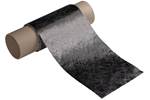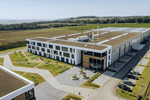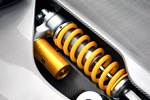Toray boosts European carbon fiber production capacity
Toray Carbon Fibers Europe S.A. facility in France will increase to an annual production of 6,000 metric tons of medium and high modulus carbon fiber tows.
Photo Credit: Toray Industries
On Oct. 4, Toray Industries Inc. (Tokyo, Japan), announced the decision to expand French subsidiary Toray Carbon Fibers Europe S.A.’s (Lacq) production facilities for regular tow (up to 24,000 filaments) medium and high modulus carbon fibers. This move will increase annual capacity at the Abidos plant in southwest France from 5,000 metric tons annually to 6,000 metric tons. Production is expected to start in 2025.
Demand for medium and high modulus carbon fibers is rising in Europe, driven by a push to move towards a net-zero society, says Toray. This growth is mainly due to higher build rates for commercial aircrafts (secondary structures and engines), as well as centrifuge for energy production, satellites and high-end automobiles.
Toray reports sustainable growth pivotal to Project AP-G 2025, its medium-term management program. Accordingly, the company has developed solutions to tackle climate change with its carbon fiber composite materials. Toray will fully leverage its resources to help achieve a carbon-neutral economy by 2050, in keeping with its corporate philosophy of contributing to society by creating new value.
For related information, read “Toray Advanced Composites to expand Morgan Hill operations” and “Toray to increase carbon fiber tow capacity by more than 20%.”
Related Content
-
Cutting 100 pounds, certification time for the X-59 nose cone
Swift Engineering used HyperX software to remove 100 pounds from 38-foot graphite/epoxy cored nose cone for X-59 supersonic aircraft.
-
Low-cost, efficient CFRP anisogrid lattice structures
CIRA uses patented parallel winding, dry fiber, silicone tooling and resin infusion to cut labor for lightweight, heavily loaded space applications.
-
Composites end markets: New space (2025)
Composite materials — with their unmatched strength-to-weight ratio, durability in extreme environments and design versatility — are at the heart of innovations in satellites, propulsion systems and lunar exploration vehicles, propelling the space economy toward a $1.8 trillion future.



